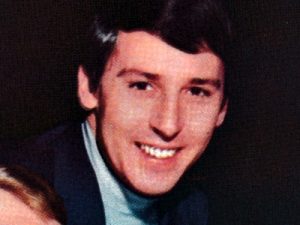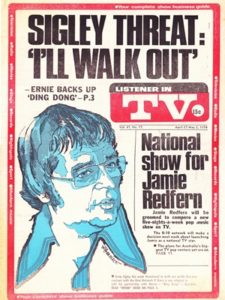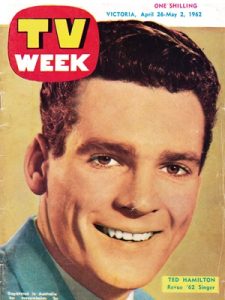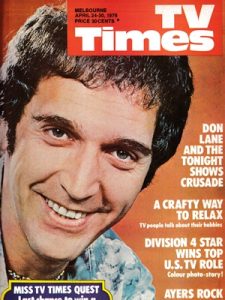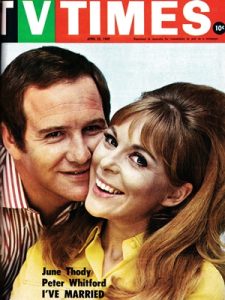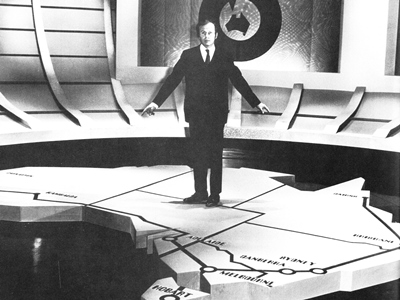
The launch of the microwave link network between the east and west coasts of Australia in 1970 marked the most significant development in Australian domestic communication since the launch of the coaxial cable between Sydney and Melbourne eight years earlier.
The network of microwave circuits formalised the facility for television programs to be relayed in an instant between the east and west coasts of Australia. Previous ventures to link Western Australia to the east coast included the infrequent, and expensive, use of circling aircraft to bounce long-range signals back to ground.
And a year before the microwave network launched, engineers from ABC, the Overseas Telecommunications Commission, the Postmaster-General Department and NASA worked together to provide a complex once-off link via international satellites to allow Western Australian viewers to see the Apollo 11 moon landing live. Had it not been for their efforts, Western Australia would likely to have been one of the few areas in the western world not to see the moon landing as it happened.
Like the coaxial cable between Sydney and Melbourne, the new microwave network that would span from Cairns right across to Carnarvon and eventually include Mount Isa and Darwin also improved national telecommunications, allowing telephone users in the eastern states to direct dial calls to the west and vice versa without going through an operator.
Project Australia, broadcast live on ABC on 9 July 1970, was the program designated to inaugurate the new communications network and the first TV program to be live across all states. Hosted by reporter Richard Oxenburgh in Sydney, Project Australia featured live segments from across the country — from points as far as Cairns, Hobart and Perth. Segment hosts included Earl Reeve in Carnarvon, Claire Dunne and Michael Brock in Kambalda, Patrick Amer (Melbourne), Bob Moore (Adelaide), Bill Brundle and Ken Short (Hobart), Keith Adam (Canberra), Garry Ord and Bruce Short (Brisbane) and John Marshall (Cairns).
Viewers became witness to various snapshots of Australia, including a live televised brain operation from a Melbourne hospital, an interview down a mine shaft in the Western Australian desert, a performance from Moscow’s Bolshoi Ballet at the site of the Sydney Opera House, a visit to a Sydney nightclub, and a choir at St Peter’s Cathedral in Adelaide.
The telecast of the brain surgery proved to be too graphic for one outside broadcast engineer, who collapsed during the program. But as the old saying goes, the show must go on, and the fainthearted employee was calmly moved aside by his colleagues and the segment continued on air without missing a beat.
The ballet segment from the Sydney Opera House was also a challenge for ABC technicians having to prepare and rig up lighting from the building that was still under construction.
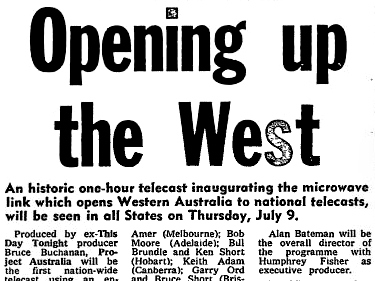
Logistically, the one-hour program involved thirteen large and small outside broadcast vans, 36 studio and outside broadcast cameras, 21 portable microwave link systems and also accessed the Pacific Ocean Satellite through the Moree and Carnarvon Earth Stations. Controlling the complex telecast were producers Humphrey Fisher and Bruce Buchanan and director Alan Bateman, based at ABN2‘s Gore Hill studios in Sydney.
So complex was Project Australia in linking so many parts of the country together in real time, it was almost twenty years later — and the advent of a domestic satellite — before a similar program, Australia Live, was made.
Source: Honeysucklecreek.net. TV Times, 8 July 1970, 22 July 1970. The Age, 2 July 1970. 39th Annual Report, Australian Broadcasting Commission, 1970-1971. Aunty’s Jubilee: Celebrating 50 Years Of ABC TV, Tim Bowden and Wendy Borchers, 2006.
